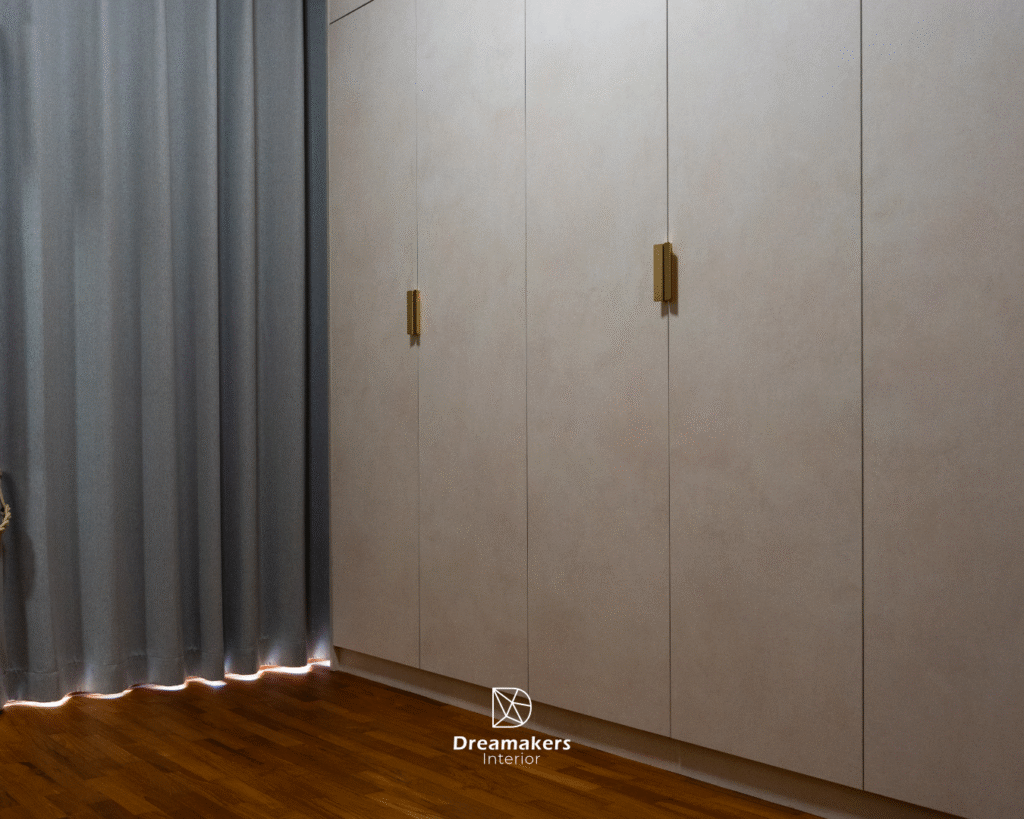Why Go Smart? Here is how it can benefit your home
The term “smart home” can conjure images of sci-fi movies with talking walls and automated kitchens. But for today’s homeowner in Singapore, it’s far more practical and accessible. Future-proofing your home isn’t about gimmicks; it’s about making your daily life more convenient, secure, and efficient.
The best part? You don’t need a billionaire’s budget. With some strategic planning—especially during your renovation—you can build a smart home ecosystem that grows with you. Let’s start with the basics.
- Ultimate Convenience: Forgot to switch off the bedroom light after getting into bed? Turn it off with your phone. Want the aircon to turn on 30 minutes before you get home? Set a schedule. It’s about simplifying your routines.
- Enhanced Security: Receive an alert on your phone when your front door is unlocked. Schedule your lights to turn on and off randomly when you’re on vacation. It’s peace of mind, delivered digitally.
- Energy Savings: Singapore’s weather means high electricity bills. Smart systems help you save by automatically turning off lights in empty rooms, adjusting the aircon temperature based on your preferences, and managing energy-hungry appliances.
Start Simple: 3 High-ROI Smart Upgrades for Beginners
You don’t have to do everything at once. Focus on these three areas for the biggest immediate impact.
1. Smart Lighting: Set the Mood from Anywhere

This is the easiest and most transformative upgrade.
- What it is: Bulbs, light strips, or switches that you can control via an app, voice command (with Google Assistant or Alexa), or automation.
- Why it’s great: Change your room’s ambiance from bright white for working to warm yellow for relaxing. Schedule porch lights to turn on at dusk.
- Renovation Tip: This is crucial! During electrical wiring, ASK YOUR ID TO INSTALL NEUTRAL WIRES at all light switch points. Many advanced smart switches require a neutral wire, and retrofitting it later is messy and expensive. Also, discuss with your ID which circuits should be dedicated to always-on smart plugs.
2. Smart Locks & Video Doorbells: Your Keyless Home
Never fumble for your keys with groceries in hand again.
- What it is: A lock that opens with a PIN code, fingerprint, smartphone, or keycard. Paired with a video doorbell, you can see and speak to visitors from your phone.
- Why it’s great: Keyless entry is incredibly convenient. You can grant temporary access codes for helpers or guests. The video doorbell adds a powerful security layer.
- Renovation Tip: If you’re planning for a smart lock, inform your ID early. While most are designed to fit standard door cutouts, it’s best to be sure. For video doorbells, ensure there is a power source (like a doorbell transformer or an outdoor plug) near your main door.
3. Smart Blinds & Curtains: Automated Comfort
Control the light and heat entering your home effortlessly.
- What it is: Motorised blinds or curtains that you can open or close with a remote, app, or schedule.
- Why it’s great: Automate them to close in the afternoon to block out the harsh sun and reduce heat, lowering your aircon usage. A simple “Good Morning” scene can open them gently to wake you up.
- Renovation Tip: THIS IS THE MOST TIME-SENSITIVE. To have a clean, wired look with no visible cables, you must install the power sockets inside the window reveal or cornice box during the electrical rough-in phase. Discuss this exact placement with your ID and electrician. Battery-powered options exist, but wired is always reliable and maintenance-free.

The Golden Rule: Plan During Renovation!
Trying to add these features after the walls are painted and sealed is difficult, costly, and messy. The renovation phase is your one chance to get the underlying infrastructure right.
Your Pre-Reno Smart Home Checklist:
- Neutral Wires: Confirm with your electrician that neutral wires are run to all light switches.
- Strategic Power Points: Plan for power outlets near windows for smart blinds, and near the main door for a video doorbell.
- Strong & Stable Wi-Fi: A robust Wi-Fi network is the backbone of a smart home. Discuss with your ID the best locations for your Wi-Fi router or mesh nodes to ensure coverage in every room, including service yards and bathrooms.
- Dedicated Hubs: If you’re using systems like Philips Hue or Aqara, a small, discreet hub is often required. Ensure you have a planned space for it (e.g., in a TV console cabinet) with a power source.
Building a Unified Ecosystem
As a beginner, try to stick to one or two ecosystems (like Google, Apple HomeKit, or Samsung SmartThings) or a communication protocol (like Zigbee or Matter). This ensures your devices can “talk” to each other easily. For example, you can create a “Goodnight” scene that turns off all lights, locks the front door, and closes the living room blinds with a single command.
Your Smarter Home Starts with a Smarter Plan
Integrating smart technology into your new home doesn’t have to be overwhelming. By starting with these foundational elements and planning the electrical backbone during your renovation, you’re not just building a home for today—you’re future-proofing it for tomorrow and beyond.
Ready to wire your dream home for the future? At Dreamakers Interior, we integrate smart home planning into our design process from day one.
Contact us for a consultation and let’s build a home that’s not only beautiful but brilliantly smart.
